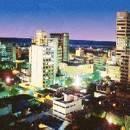Barranquilla, Atlántico, Colombia
Suggest Place to Visit
1899
Track to location with GPS |
 |
Barranquilla is a Colombian city, capital of the department of Atlántico. In 1993 it was constitutionally erected as a special, industrial and port district. It is located in the north of the country, on the Colombian Caribbean Coast, on the western bank of the Magdalena River, 7.5 km from its mouth in the Caribbean Sea. It has one of the most important and active maritime and river ports in Colombia, as well as being an important commercial, industrial, cultural and university center of the Caribbean Region.
The population of Barranquilla is 1,148,506 people, which makes it the fourth most populated city in the country behind Bogotá, Medellín and Cali. The city is the nucleus of the Barranquilla Metropolitan Area, which is also made up of the municipalities of Soledad, Galapa, Malambo and Puerto Colombia. The metropolitan area is home to 1,762,143 inhabitants, also occupying the fourth position among the country's conurbations. As capital of the department, Barranquilla is the seat of the Government of Atlántico, the Departmental Assembly and the Superior Court of Atlántico, the highest judicial body of the department.
The establishment of the city dates back to the third decade of the seventeenth century, when the sectors surrounding the Magdalena River began to populate around grants granted by the Spanish Crown. During the time of Independence, Barranquilla was distinguished by the support of its inhabitants to the liberating cause, which earned it to be erected as a town in 1813. Only until the second half of the 19th century did it acquire strategic and economic importance when the navigation to steam up the Magdalena River, which allowed it to become the main exporting port of the country until the first half of the 20th century. From the late 19th century to the 1930s, Barranquilla was the main entry point to Colombia for thousands of immigrants and for advances such as aviation, radio and telephone, as well as various sports.
The city is home to one of the most important folkloric and cultural festivities in Colombia: the Barranquilla Carnival, declared Cultural Heritage of the Nation by the Colombian Congress in 2001 and Oral and Intangible Heritage of Humanity by UNESCO in 2003.
Place names
The name of Barranquilla refers to the ravines that existed in the sector bordering the Magdalena River, where the city began to form. During the Colony, the Barranca denomination was common in riverine populations (Barrancabermeja, Barranca Nueva, Barranca Vieja). The diminutive in this case is an alteration probably of Aragonese origin. During the Colony, the area was successively known as Sitio de los Indios de Camacho or Camach (or simply Camacho, by the Kamash Indians, inhabitants of the region when the Spanish arrived), Sabanitas de Camacho, San Nicolás de la Barranquilla ( by San Nicolás de Tolentino, patron saint of Don Nicolás de Barros and de la Guerra, founder of the San Nicolás farm that gave rise to the development of the area), Barrancas de Camacho, Barrancas de San Nicolás, Barranquilla de Camacho and Barranquilla of San Nicolás.
Motes
In 1921, President Marco Fidel Suárez named Barranquilla Pórtico Dorado de la República when he inaugurated the Customs Administration building in recognition of its economic importance as a port since the end of the 19th century, of being the pioneer city in commercial aviation in Latin America (see Scadta), and that the city was the point of introduction of new advances to the country such as the telephone, as well as several sports and thousands of immigrants. In 1946, when inaugurating the first V Central American and Caribbean Games, President Mariano Ospina Pérez reaffirmed the nickname by calling Barranquilla Puerta de Oro de Colombia, as it has been known since then.
Barranquilla is also known as La Arenosa, as the President of the Republic of New Granada Tomás Cipriano de Mosquera called it during his stay in Barranquilla in 1849, and Curramba, la Bella, inverse pronunciation of the syllables of the abbreviation Barranq. (q-rran-ba) used by the Barranquilla journalist Juan Eugenio Cañavera in Bogotá in the mid-20th century. The appendix ´´la bella´´ was assigned to him by the also Barranquilla journalist Roger Araújo as a counterweight to the pejorative tinge that Curramba had in the beginning. From Curramba the popular name ´´currambero´´ is derived.
The city is located in the northeastern corner of the department of Atlántico, on the western bank of the Magdalena River, 7.5 km from its mouth in the Caribbean Sea.
Barranquilla is located at a latitude 10º 59´ 16´´ north of the equator and a longitude of 74º 47´ 20´´ west of Greenwich, taking as reference the Plaza de la Paz, the zero point of the city.
The urban area is built on a slightly inclined plane whose extreme heights, according to the Agustín Codazzi Geographical Institute, are 4 Msnm to the east and 98 meters to the west, above sea level. Other sources indicate accidental heights in the hills, up to 120 meters outside the city.
Politically, Barranquilla limits to the east with the department of Magdalena (through the Magdalena river), to the north with the municipality of Puerto Colombia and with the Caribbean Sea (lands of the Mallorquín swamp, western tajamar and Puerto Mocho), to the west with the municipalities of Puerto Colombia, Galapa and Tubará and to the south with the municipality of Soledad.
The climate of Barranquilla is of a dry tropical or xeromegaternal tropical type, that is, corresponding to a vegetation typical of dryness and under high temperatures.
The average temperature is 27.4ºC. From November to early April, coinciding with the boreal winter, the northeast trade winds blow, partly mitigating the intense heat. Towards the end of June, the southeast trade winds blow, producing the Veranillo de San Juan. This is why at that time there is an atmosphere similar to December.
Barranquilla's rainfall regime is governed by two periods: a dry one, from December to April, and a rainy one, which runs from April to early December. In April or May the ´´primera´´ rains begin. Towards the end of June, much of July and sometimes in August, the rain tends to diminish, constituting a “dry” known as the summer of San Juan. Average annual rainfall is 821 mm.
Due to its importance in the sector of the national economy, the municipality of Barranquilla passed to the category of Special, Industrial and Port District in 1993. The city is located in the first tourist region of Colombia, the North Coast, among the main poles attractions such as Cartagena de Indias to the southwest and Santa Marta to the northeast.
Barranquilla is a first-rate industrial center. Economic activity is dynamic and is mainly concentrated in industry, commerce, finance, services and fishing. Among the industrial products are vegetable fats and oils, pharmaceutical, chemical, industrial products, footwear, bus bodies, dairy products, sausages, beverages, soaps, construction materials, furniture, plastics, cement, metal-mechanical parts, garments of dress and craft.
According to the result of the Industrial Density Index by department according to four main municipalities (IDI) 2000-2006 from DANE, Barranquilla is in fourth place with a coefficient of 1.4338 establishments per km², below Itagüí, Sabaneta and Medellín . The main industrial corridors are Vía 40, Circunvalar, Calle 30 (Autopista al Aeropuerto) and Barranquillita. Lately, several industrial parks have been put into service, such as Metroparque, Industrial del Caribe, Industrial Riomar, Industrial, Comercial y Portuario (PIPCA), Industrial del Norte, Industrial La Trinidad, in addition to the existing Marisol and Almaviva.
According to the 2005 census, 12.0% of the establishments are dedicated to the industry; 45.2% to commerce; 41.3% to services and 1.4% to other activity. 5.7% of households in Barranquilla have economic activity in their homes. 84.8% of occupied rural dwellings, with people present on the day of the census, had agricultural activity. 93.5% of the establishments held between 1 and 10 jobs the month before the census. Percentage of occupied rural dwellings, with people present on the day of the census, and who had agricultural activity: agricultural 92.9%, livestock 89.3%, fish farming 3.6%. Most of the houses simultaneously have 2 or 3 types of activities. In the establishments with the highest number (0 to 10 jobs), Commerce (47.4%) is the most frequent activity and in the group of 10 to 50 people the main activity is Services (52.4%). Of the total crops associated with rural housing, 50.0% correspond to temporary only, 35.7% to associated temporary, 14.3% to permanent only and 0.0% to permanent associated.
It is worth highlighting the importance of the Gran Central de Abastos del Caribe for the collection and distribution of food to the entire region.
The city has a complete free zone infrastructure. The Barranquilla Free Zone is the oldest and most extensive in the country; It has around 90 companies installed. As of 2007, the construction of three new free zones with all international specifications has been undertaken, the first in Galapa, 11 km and 20 minutes from the port, the second in Barranquillita and the third in the neighboring town of Juan Mina , called La Cayena.
The maritime and river terminals are engines of industrial and commercial development in the Caribbean Region. The port of Barranquilla covers two main routes, that of the Magdalena River, which connects it with the interior of the country (an advantage that other ports on the Caribbean Coast do not have), and that of the Caribbean Sea, through which millions of tons are traded. with Europe and Asia.
Thanks to the growing boom and demand for coal, the construction of the new Deep Waters Port of Barranquilla, concessioned to the Bocas de Ceniza Port Society, becomes viable. The ´´Superport´´, as it is called locally, will have an initial investment of 170 million dollars and will be ready for the beginning of 2010. For a future expansion, the use of the ´´Superport´´ is planned in mixed cargo.
In Barranquilla an active business and commercial tourism takes place throughout the year and, especially during carnivals and the end of the year, receives a large influx of visitors. In terms of hotels, the city has an adequate infrastructure focused mainly on the executive market and the carnival season. They can be found from inns and residences to 5-star hotels of recognized national and international chains. The best hotels are located in the north of the city, near important business areas and shopping centers, which offer all kinds of facilities for holding events, conventions, congresses, among others. Another important hotel sector is the Center, more oriented to smaller budgets.
Barranquilla is the venue for various cultural events such as artistic shows, exhibitions, literary workshops, philosophical talks, plays, poetry days, dances, exhibitions, concerts and festivals, such as the Orchestras Festival within the framework of the Carnival and Barranquijazz. Since 1957 the Concert of the Month has been held, a space for the dissemination of classical music.
Culture is promoted in the city by the District Institute of Culture and Tourism of Barranquilla, [161] attached to the Mayor's Office, and entities such as the Cayena Cultural Center of the Universidad del Norte, the Faculty of Fine Arts of the Universidad del Atlántico, the Comfamiliar Cultural Center, Combarranquilla, the Barranquilla Carnival Foundation, the Bank of the Republic, the Colombo-French Alliance, the Colombo-American Cultural Center, the Avianca Cultural Hall, the Luis Eduardo Nieto Arteta Corporation, which manages the Cultural Complex of the Old Customs, made up of the Pilot Library of the Caribbean, the Pilot Children's Library of the Caribbean, the Historical Archive of the Atlantic and the Hans Federico Newman Music Documentation Center; universities and colleges, among other cultural associations.
Comments
We don´t have yet any comments about:
Barranquilla
Barranquilla
Be the first to leave a comment as it is very important to inform other people
Outros locais a visitar
Within a radius of 20 km from:Barranquilla
Museo de Arte Moderno de Barranquilla |
| 4,5 Km |
 |
Jardín Zoológico de Barranquilla |
| 5,6 Km |
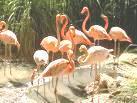 |
salt bay |
| 16,1 Km |
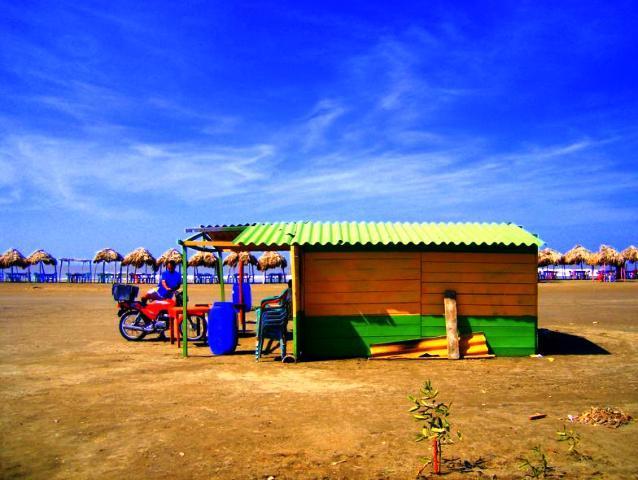 |
Colombian Port |
| 17,1 Km |
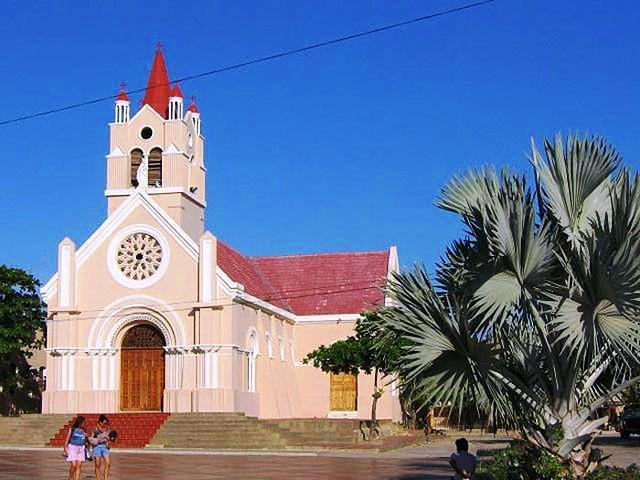 |
Pradomar |
| 17,3 Km |
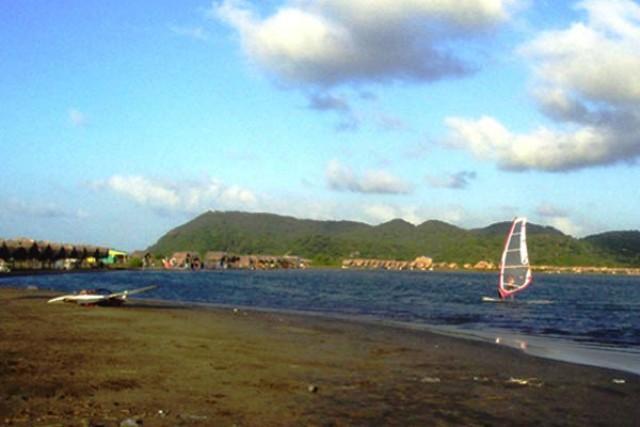 |
Hotel reservation near Barranquilla within a radius of 20 km
Why to book with ROTAS TURISTICAS
The best prices
Our partnerships with the world´s largest operators offer research on the best market prices.
More options
At Rotas Turisticos you can book the hotel, buy the air ticket, book the transfer from the airport to the hotel and vice versa, book the local excursions, rent the car, take travel insurance and consult the places to visit and where to go.
Holiday Tips & Destinations
Hundreds of holiday destinations with all the options that allow you to easily choose the destination that best suits your dream vacation.
ROTAS TURISTICAS
Links


